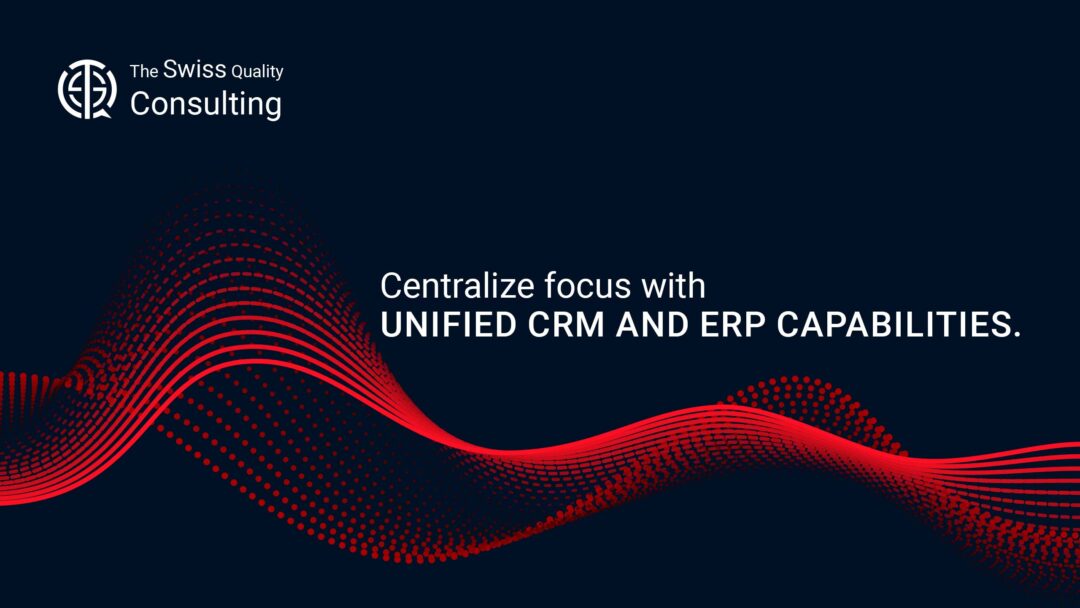Unlocking the power of integration, businesses can centralize focus with unified CRM and ERP capabilities, paving the way for enhanced efficiency and success
In the fast-paced world of business, achieving excellence requires a combination of strategic thinking, effective management, and the right tools. For business executives, mid-level managers, and entrepreneurs, the integration of Customer Relationship Management (CRM) and Enterprise Resource Planning (ERP) systems is a game-changer. This article explores the importance of centralizing focus through unified CRM and ERP capabilities and how it can drive success in today’s competitive landscape.
The Role of Change Management
Change management emerges as a pivotal factor in the seamless integration of CRM and ERP systems. It encompasses a comprehensive approach that prepares organizations for a transformative shift in processes, technology, and culture. To ensure a smooth and successful transition, business leaders must take the lead in effectively communicating the rationale behind this integration, addressing concerns head-on, and fostering a supportive environment where employees feel valued and engaged throughout the process.
At the heart of effective change management lies the ability to articulate the overarching vision and objectives that drive the integration of CRM and ERP systems. Leaders must clearly convey the strategic benefits of this integration, highlighting how it will streamline operations, enhance customer relationships, and ultimately drive business growth. By providing a compelling narrative that connects the integration to the organization’s overall goals, leaders create a sense of purpose and shared direction among employees.
Addressing employee concerns and potential resistance is another critical element of successful change management. The integration of CRM and ERP systems often involves changes to familiar workflows, the introduction of new technologies, and the potential for job displacement. Leaders must proactively address these concerns by providing transparent communication, addressing questions openly, and emphasizing the long-term benefits of the integration for both the organization and its employees.
Creating a supportive environment where employees feel valued and engaged throughout the change process is essential for maximizing the success of CRM and ERP integration. Leaders should foster open communication channels, encourage employee feedback, and provide opportunities for training and development. By empowering employees to participate in the change process, leaders cultivate a sense of ownership and investment in the integration, leading to increased adoption and utilization of the new systems.
In conclusion, change management is not merely a reactive response to the integration of CRM and ERP systems; it is a proactive and strategic approach that ensures a smooth transition, minimizes resistance, and maximizes employee engagement. By effectively communicating the rationale behind the integration, addressing concerns head-on, and fostering a supportive environment, business leaders can harness the transformative power of these systems and propel their organizations towards sustainable success.
Change Leadership – Guiding the Transition
Change begins with strong leadership. Business executives must take charge and lead their teams through this transformation. They should articulate the benefits of CRM and ERP integration, such as improved data accuracy, streamlined operations, and enhanced customer experiences. Effective communication and unwavering support are key.
Elevating Performance with Executive Coaching
Effective integration of CRM and ERP requires not only technological prowess but also skilled personnel. This is where executive coaching services come into play. Managers and employees need guidance to make the most of these systems.
Effective Communication – Bridging the Gap
Clear and effective communication is vital during the integration process. Executive coaches can help leaders refine their communication skills, ensuring that the benefits and goals of CRM and ERP integration are understood throughout the organization. Building support and maintaining morale are essential components of this journey.
The Synergy of CRM and ERP
Now, let’s relate this to the quote: “Centralize focus with unified CRM and ERP capabilities.” CRM and ERP systems, when integrated, allow businesses to centralize their focus by consolidating customer data and operational information. This centralization enables organizations to make informed decisions, improve customer service, and optimize resource allocation.
Streamlined Operations for Efficiency
A unified CRM and ERP system streamlines operations by eliminating duplicate data entry and reducing errors. It ensures that customer data is consistent across the organization, which is crucial for delivering a seamless customer experience.
Realizing Business Success
CRM and ERP integration can be a catalyst for business success. By centralizing focus, organizations can make data-driven decisions, identify growth opportunities, and respond to market changes with agility. This competitive advantage can lead to increased profitability and sustainable growth.
Business News Updates for Informed Decision-Making
Staying informed about industry trends and market developments is essential for leveraging CRM and ERP integration effectively. Regularly accessing business news updates can provide insights that guide strategic decisions and help organizations remain competitive.
Conclusion
In conclusion, centralizing focus through unified CRM and ERP capabilities is a strategic move that can drive business excellence. However, success in this endeavor requires effective change management, leadership, and the support of executive coaching services. The synergy of CRM and ERP integration empowers organizations to streamline operations, make informed decisions, and achieve sustainable success in a competitive business landscape.
#CRM #ERP #ChangeManagement #ExecutiveCoaching #BusinessSuccess

